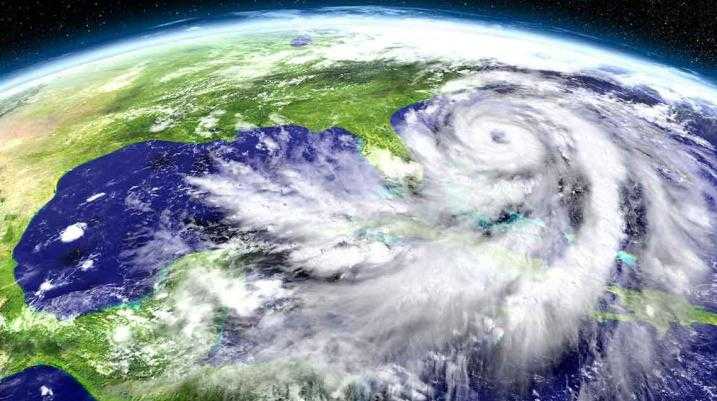Hurricane Matthew Checklist for Melbourne: How to Prepare for Landfall Tonight

Hurricane Matthew, the second major hurricane in the Atlantic Basin this year, is expected to make landfall in Brevard County between late night on Thursday, Oct. 6 and early morning on Friday, Oct. 7, according to Orlando Sentinel.
Matthew left devastation in its wake as it passed through Haiti and the Bahamas, and has once again strengthened to a category-4 hurricane as it approaches Florida’s Space Coast. Mandatory evacuation is underway for beachside residents of Brevard County, and public evacuation shelters are now open in Titusville, Cocoa, Palm Bay, Micco, and Melbourne.
The hurricane is expected to devastate eastern Florida with projected maximum sustained winds of 140 mph. The storm could make parts of Florida “uninhabitable for weeks or months,” according to the National Weather Service in Melbourne. Since Hurricane Matthew is expected to make landfall in Brevard County, it is absolutely essential for residents in Melbourne to know how to protect their family, home, and property from damage.
“Don’t take a chance. A small movement of the storm could mean a lot. That’s why we have to prepare for a direct hit. So again, if you need to evacuate and you haven’t, evacuate. This storm will kill you. Time is running out. We don’t have that much time left,” Gov. Rick Scott said at an Oct. 6 news conference, according to reports by CNN.
Here are the ways residents in Melbourne can prepare for Hurricane Matthew’s expected landfall:
Build Your Disaster Supply Kit
A disaster supplies kit is essential in situations where an evacuation may be necessary, and should include enough supplies to last for at least 72 hours. A disaster supplies kit includes not just stocked first-aid, but food, water, a flashlight, radio, and extra batteries as well, according to the Department of Homeland Security.
Be sure to stock up on canned food, whole grain cereals, and non-perishable food. Your disaster supplies kit should have 72 hours worth of food for each person in your family. Similarly, the DHS recommends that you have at least one gallon of bottled water per person for three days worth of cooking, drinking, and bathing.
Can Your Home Withstand the Wind and Rain?
Make sure your home is as prepared as possible to withstand the heavy winds and rains of a potentially category-4 hurricane. Part of this process involves tying down or stowing away any items in your yard that could be picked up by the wind, such as patio furniture, to prevent it from damaging your or your neighbor’s home.
Flying glass is another hazard that a major hurricane can pose. The DHS recommends that families board up windows with plywood, or install permanent storm shutters, to ensure that windows do not shatter during the storm.
Lastly, did you know that gutter maintenance can make the difference between a dry home and one that has been saturated by flood waters? Clear your gutters and downspouts of debris and other objects that could prevent water from flowing away from your home in the case of heavy rains, as recommended by Consumer Affairs.
Do You Know Your Brevard County Evacuation Zone?
If you received the alert to evacuate, would you know how to get to your posted evacuation route and shelter? Be sure to review which Brevard County evacuation zone your home falls under, your posted evacuation route, and the nearest shelter to your home, in the case of an emergency. You can find your evacuation zone and route on the Brevard County website. Everyone in your family should understand the evacuation plan and be ready to leave right away.
Is Your Car Evacuation-Ready?
Don’t let a blown tire or empty gas tank get in the way of safety for you and your family. Your car should be ready to go as soon as you receive an alert to evacuate. This means a tank full of gas, tires that have been checked for punctures and proper pressure, and well-maintained fluid levels in your car, according to Consumer Reports.
Take Photos of Your Property
As we previously mentioned when Hurricane Hermine menaced Florida, if your home is damaged as a result of Hurricane Matthew, photographs are often the best proof you can have when filing a claim.
Be sure to take several wide-angle photos of your property to show the condition of the property before it was pummeled by a hurricane. Essential photos to show to the insurance company include the interior and exterior of your home, your garage, and any other buildings or parked vehicles on your property.
After the Storm
Sometimes, despite your due diligence in protecting your home and paying your premiums month after month, the insurance company will still fight your claim. They may even outright deny it. This frustrating and often cruel treatment doesn’t have to stand.
Instead, consider looking into a knowledgeable insurance dispute attorney. Our hurricane insurance dispute page offers information on what these attorneys can do for you, and also shows you what your insurance company should be covering. If you’re already ready to file a claim, contact us today for a free, no-risk case evaluation.
Injured? Getting the compensation you deserve starts here.

Injured?
Not sure what to do next?
We'll guide you through everything you need to know.